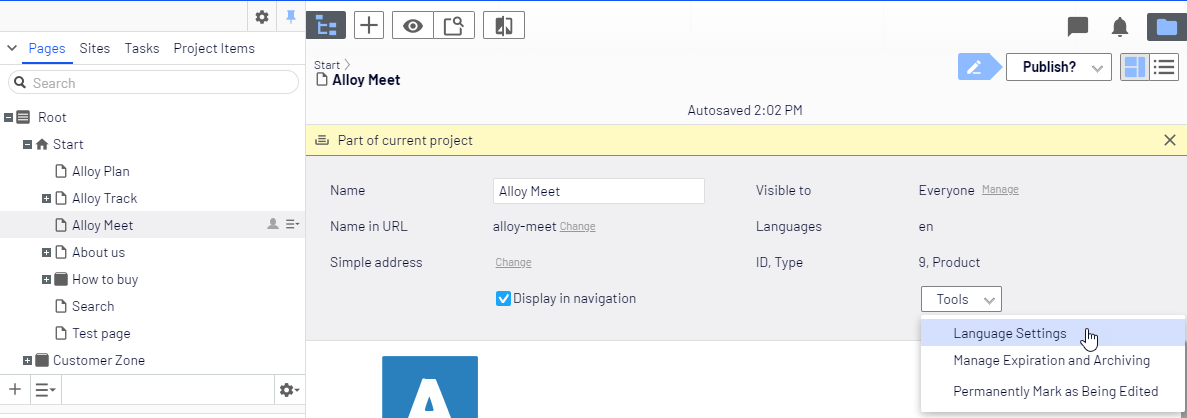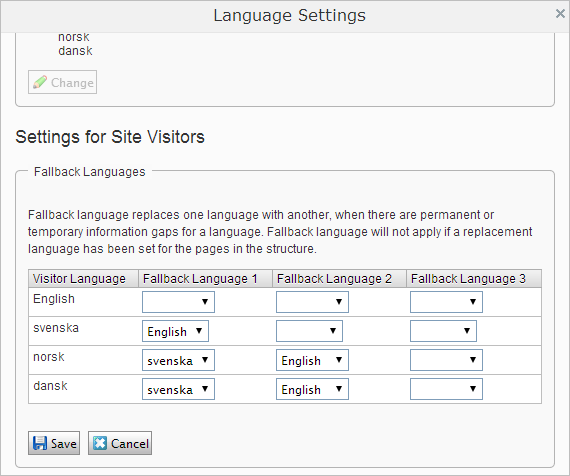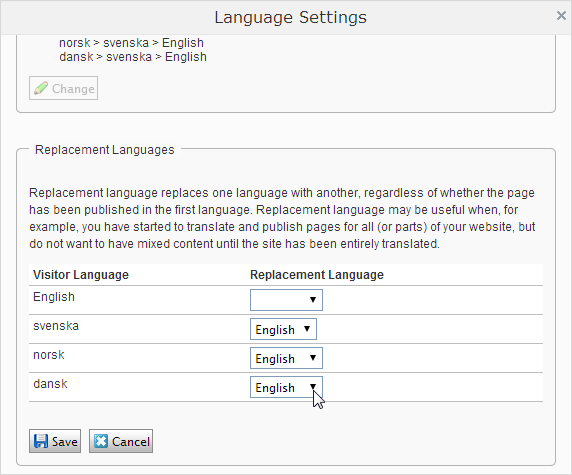 Fallback languages
Fallback languages
For many multi-language websites, only parts of the website content exist in all available languages because translations may not be ready, content is not relevant for a specific language, or that some content should display in a defined language.
You have the following options:
- Unless a fallback or replacement language is defined, content is invisible to visitors browsing the website in a language into which content is not translated.
- Define a fallback language, in which the content appears until the content is available in the desired language.
- Define a replacement language, in which content appears regardless of the language in which the content exists. If you define a replacement language for some content, a fallback language does not apply.
Fallback and replacement languages may cause mixed languages to be displayed on the website.
Setting fallback and replacement languages
Fallback and replacement languages are defined from the All Properties edit view, when editing a page or a block and then selecting Tools and Language Settings.

Language settings are inherited from the parent page. If you are redefining language settings for a subpage to a parent page with language settings defined, you need to deselect Inherit settings from the parent page "xxx" in the Language Settings dialog box, to define settings for the subsection.
In this example, the master website language is English, and Swedish, Danish and Norwegian are enabled languages. Content is first created in English, and then translated into Swedish, Norwegian and Danish in that order. Swedish is used as first fallback for Norwegian and Danish. If content does not exist in Swedish (not translated yet), then a second fallback language English is applied.

This example shows a multi-language website with a legal information section with content that should be displayed in English. To ensure this, a replacement language is applied for the legal information page branch.

Another scenario for using replacement language is when you have started to translate content on your website, but do not want to have mixed languages until translation is completed. When translation is ready, you simply remove the replacement language.
See also
- Translating content about translating Optimizely CMS content into different languages.
- Optimizely Languages about extending the functionality in Optimizely for translating content into multiple languages.